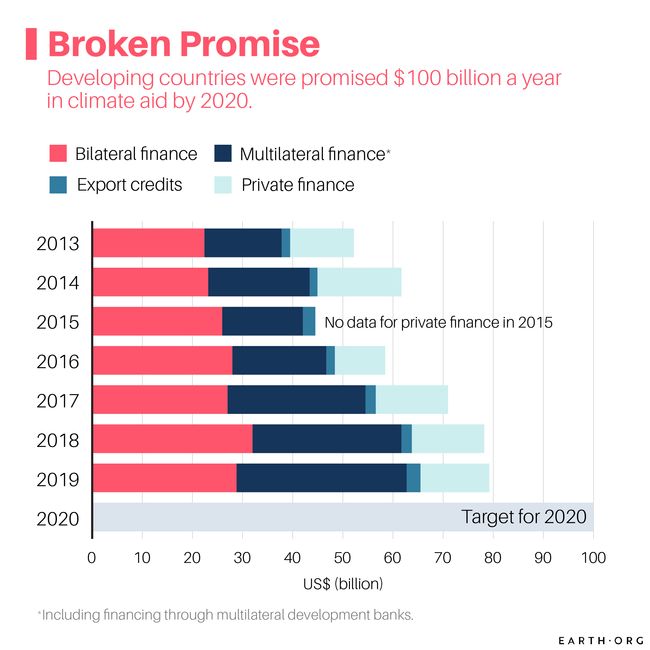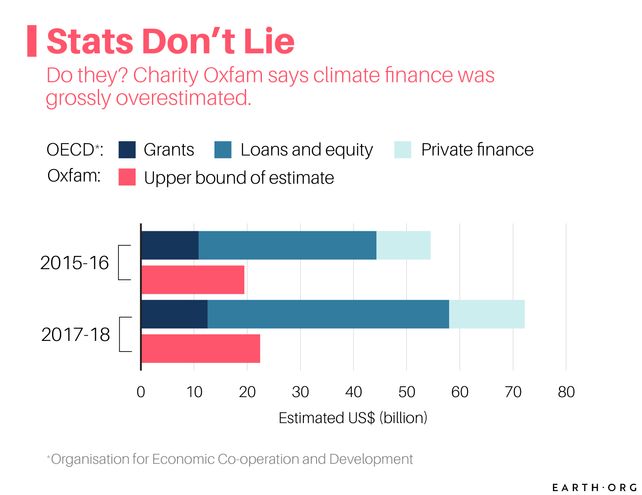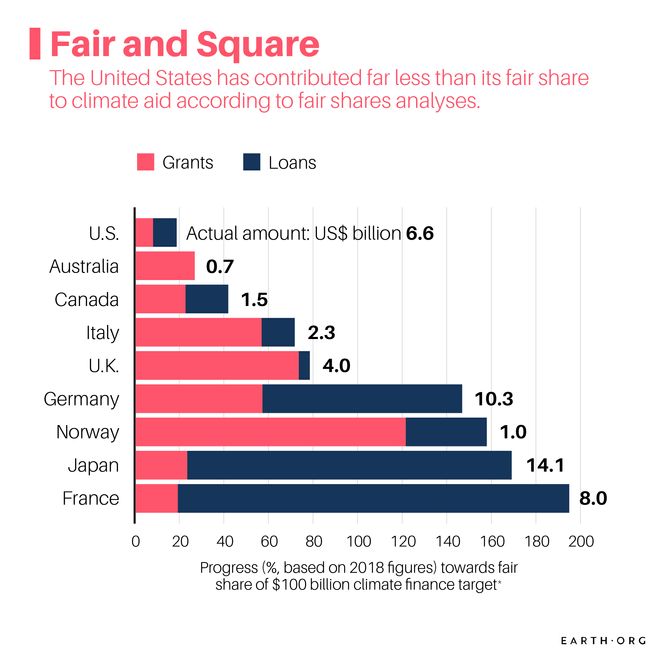Wealthy nations are far behind schedule on a promise to reach $100 billion worth of climate financial aid for developing nations by 2020. Earth.Org takes a closer look.
—
There will be many things to cover at Glasgow’s COP26 summit, but one of the biggest may be a conspicuously broken promise.
The pledge was made at COP15, 12 years ago in Copenhagen. Countries agreed for the world’s wealthiest countries to raise $100 billion per year by 2020 to help developing countries adapt to climate change.

Funds have been distributed each year, meant to progressively increase to reach the wset target, but this never happened. Figures for 2020 are not yet in, but it is clear that neither last nor this year will see the promise kept.
The issue is an important one for the upcoming COP26, partly because of its relative insignificance. The adaptation cost of climate change will be in the trillions per year, dwarfing the $100 billion that should be easy to gather up. As Saleemul Huq, director of the International Centre for Climate Change and Development in Dhaka put it, “the $100 billion is iconic in terms of the good faith of the countries that promised it,” nothing more.
Or nothing less. A successful transition to sustainability relies on enough nations doing the right thing without legal binding. Cases of missed targets and dishonored pledges can create an atmosphere of distrust that could hamper any progress the COP summits are meant to foster.
To make things worse, it was revealed by the charity Oxfam that the OECD’s estimates of climate finance were vastly overestimated. While the official numbers claim $70 billion to $80 billion were distributed each year in 2017-18, Oxfam found that the real number was only between $19 billion and $22 billion. It explains that the full value of loans shouldn’t be counted, leaving only grants and the benefit accrued from low-interest lending. Some countries, such as Japan, count the full value of aid projects that don’t exclusively target climate action, further skewing the results.

Fair Share
Although rich nations agreed to the $100 billion goal, it wasn’t formally spelled out what each would pay. Calculations of fair shares take either wealth, past emissions, population or a combination of these metrics into account. All combinations agree: the United States has come up short.
According to the WRI, it should contribute 40-47% of the $100 billion, but instead, it gave an average $7.6 billion between 2016 and 2018. Japan and France gave more than their fair share but most of it came from loans.

Where Is the Money Going?
An overwhelming majority of the funds is going toward carbon emission mitigation where success metrics are clear, as opposed to adaptation efforts that can be harder to assess. As of now, only $20 million a year goes toward adaptation, though the OECD estimates that developing countries already need $70 billion and will need between $140 billion and $300 billion by 2030.
Far more concerning is that climate aid is not equally distributed. Most of it has gone to middle-income countries, while the poorest, most vulnerable are left behind due to an inability to jump through the complex hoops to access the funds. The International Institute for Environment and Development in London reported that it could only track 20% of what little had been dedicated to the poorest countries between 2014 and 2018,
What Now?
Wealthy countries reaffirmed their commitment to the annual $100 billion contribution at the G7 summit in June, with new pledges by Japan, Germany and Canada. Now, in the months preceding COP26, the EU pledged $5 billion more annually by 2027, while the US promised an extra $11.4 billion by 2024. That would make it the largest contributor in absolute terms, but behind most in fair share.
Yet, the progress is welcome, and economists believe the $100 billion target will be reached in 2022. Talks of a post-2025 target will be broached at COP26 and though a final decision is unlikely to happen so early, a figure of $750 billion a year by 2030 has been mentioned.
How Much Is Enough?
According to the Climate Policy Initiative, a non-profit based in San Francisco, California, estimates that climate-related finances totaled $632 billion in 2019-20. That’s a far cry from the $1.6 – $3.8 trillion required to stay below 1.5C. Meanwhile, fossil fuels still receive $554 billion in subsidies (by one estimate), as noted by Jocelyn Timperley from Nature. To put things in perspective, global military spending was $2 trillion in 2020.
The challenge now is to overcome the monkey wrench COVID-19 put into the world’s plans two years ago and attempt to get all nations on the same page. It is, after all, everyone’s fight.
This article was written by Owen Mulhern. Cover photo by Andrew Petrov on Unsplash.
You might also like: Climate Finance: Are the Rich Nations Doing Enough?










![The Statistics of Biodiversity Loss [2020 WWF Report]](https://u4d2z7k9.rocketcdn.me/wp-content/uploads/2020/12/lprwinkyTHB-544x306.jpg)





